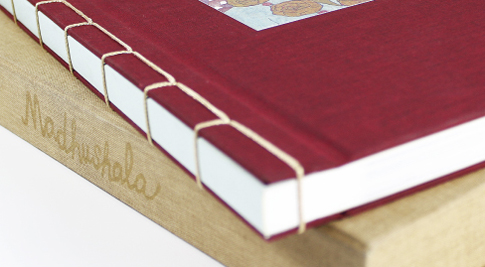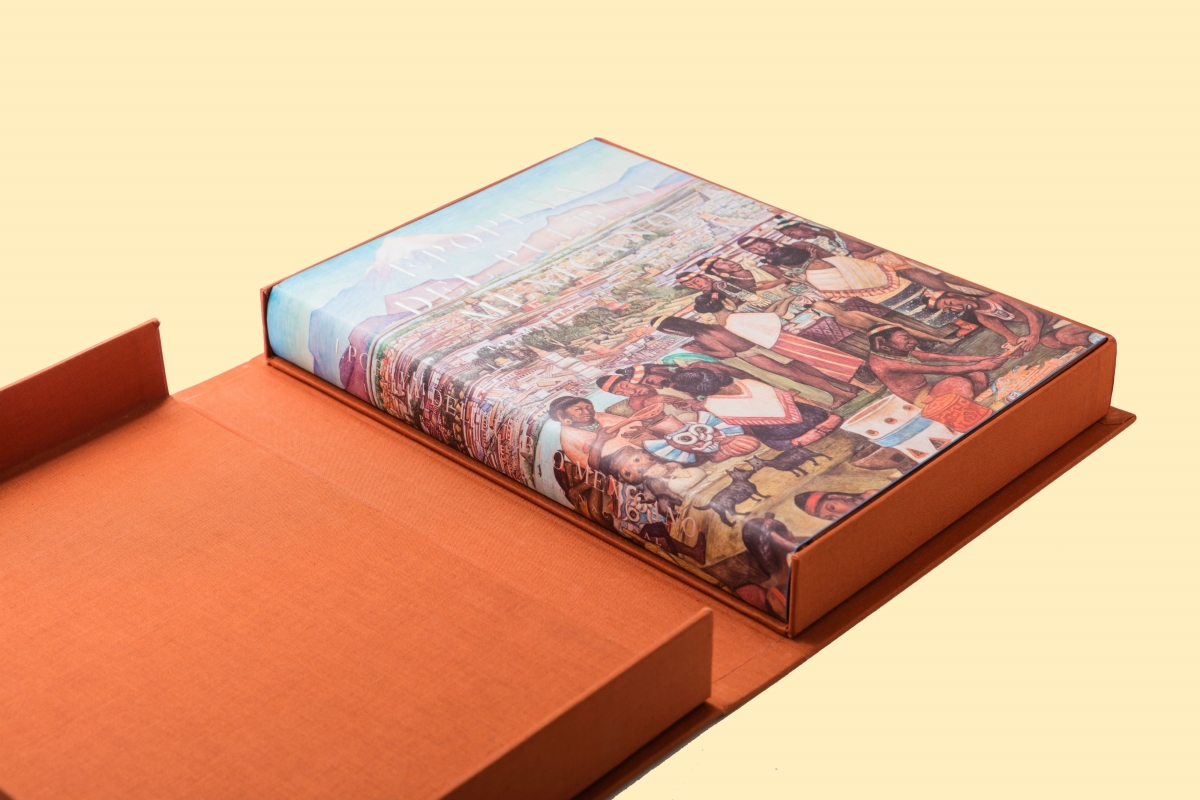Importance of Typography in Your art book Design
Discover the Important Overview to Art Book Printing for Aspiring Artists and Publishers
As an ambitious artist or publisher, comprehending the nuances of art book printing is important to bringing your vision to life. You'll require to take right into account various variables, from choosing the appropriate type of book to guaranteeing color precision and choosing suitable products. Each choice impacts the end product significantly. So, what are the crucial elements you should concentrate on to create a sensational art book that really represents your job?
Comprehending Different Types of Art Books
When you plunge into the world of art publications, you'll swiftly uncover that they can be found in different kinds, each customized to various artistic expressions and target markets. Coffee table publications usually display magnificent visuals, ideal for informal surfing, while monographs dive deep into an individual artist's job, providing context and insights. If you have an interest in details art activities, event brochures use comprehensive documentation of shows, including essays and reviews.
For training functions, art manuals and technique books lead you through various mediums and designs, making them important for aiming artists. Each layout offers its purpose, and recognizing their distinctions can boost your art book journey.
Picking the Right Paper and Products
Picking the right paper and materials can considerably impact the overall high quality and feel of your art book. For lively colors and complex information, decide for a shiny finish or a heavyweight matte paper that boosts visual depth.
Consider the weight of the paper, too. Thicker options usually offer an even more specialist appearance, while lighter papers can decrease printing costs. Don't forget the binding materials; a strong cover can shield your pages and contribute to the book's aesthetic.
Finally, take into consideration sustainability. Green choices are obtaining appeal and can reflect your values as a musician. By meticulously picking your paper and materials, you'll assure that your art book not just looks fantastic yet also feels special in the hands of your readers.

Picking the very best Printing Methods
When it concerns publishing your art book, picking between offset and electronic printing can greatly influence your end product. You'll also wish to take into account just how paper quality influences the overall appearance and feel of your artwork. Let's explore these essential printing techniques to discover the most effective suitable for your job.
Offset vs. Digital Printing
While both balanced out and electronic printing have their benefits, choosing the best technique for your art book can greatly impact the final item. Balanced out printing supplies premium images and vibrant colors, making it excellent for larger print runs. If you're seeking to generate hundreds or countless duplicates, counter will provide you regular outcomes and reduced per-unit expenses. On the other hand, electronic printing excels for smaller amounts and quicker turnaround times. It enables very easy modification, allowing you to publish unique copies without additional configuration prices. Consider your budget plan, timeline, and the quantity of your project. Eventually, your option must align with your imaginative vision and circulation technique, making sure that your art book reflects the top quality you desire.
Paper High Quality Considerations
Selecting the right paper high quality can substantially improve the visual appeal and responsive experience of your art book. Begin by taking into consideration the weight and appearance of the paper. Larger paper usually really feels even more luxurious and can better display vibrant colors and complex information. For prints, a glossy coating can make images pop, while a matte surface gives a softer, a lot more refined appearance. Do not ignore the paper's brightness; brighter sheets can boost shade accuracy and comparison.
Following, believe regarding the sustainability of your option. Environmentally friendly choices are coming to be significantly popular and can attract environmentally-conscious readers. Lastly, request samples to see exactly how different documents work with your artwork, ensuring the last product mirrors your vision completely.
Making Sure Shade Precision in Your Prints
To attain stunning prints, you need to concentrate on shade accuracy from the begin. You'll intend to utilize shade calibration strategies to confirm your display and printer are in sync. In addition, proofing your job prior to the final print run can help capture any discrepancies, ensuring your art looks equally as you imagined.
Color Calibration Methods
Assuring color precision in your prints starts with efficient color calibration techniques that help preserve consistency between your digital pictures and last printed products. First, calibrate your monitor using equipment calibration devices to achieve the ideal color representation. This validates that what you see on-screen suits what gets printed. Next, select a shade account matched for your printing process, like CMYK for print materials. Consistently inspect your these details printer's setups and preserve it to stay clear of shade changes. It's likewise necessary to utilize high-quality paper that enhances your inks, as different surface areas can greatly affect color outcome. By constantly applying these methods, you'll improve the general high quality of your art prints and better convey your creative vision.
Proofing for Precision
While you might assume your digital photos are prepared for print, proofing is essential for achieving shade precision. Before devoting to a full print run, constantly request an evidence from your printer.
If modifications are needed, connect plainly with your printer regarding your preferred results. Do not wait to demand multiple evidence if necessary; it's worth the investment to obtain it. Eventually, complete proofing warranties that your art work is stood for as you pictured it, preserving your creative honesty throughout the printing procedure.

Designing Layouts That Enhance Your Artwork
When you design formats for your art book, it's vital to contemplate just how each component connects with your art work. Purpose for a balance between visuals and message, ensuring neither outweighes the various other. Use white space purposefully; it gives your artwork room to take a breath and accentuates its information.
Think about the flow of your book. investigate this site Set up pictures in a manner that overviews the visitor's eye, creating a story or thematic development. art book. Vary the sizes and alignments of your artwork to keep the design vibrant and interesting
Select fonts that match your artwork without distracting from it. Maintain text succinct and appropriate, giving context or understanding that improves the visitor's experience.
Ultimately, test various layouts. Print samples to see how the designs equate theoretically, and change as needed. By thoughtfully developing your formats, you'll develop an aesthetically interesting art book that resonates with your audience.
Binding Choices for an Expert Complete
Selecting the right binding alternative can significantly affect the overall discussion of your art book. You'll intend to take into consideration both aesthetic appeals and longevity when making your choice. Popular alternatives include perfect binding, which offers a sleek appearance and is best for thicker books; saddle stitching, ideal for smaller sized brochures; and spiral binding, which enables web pages to lay level for simple viewing.
If you're going for a costs feeling, case binding is an outstanding selection, giving a sturdy cover and a professional appearance (art book). Do not forget the cover material; alternatives like cloth, leather, or a shiny coating can boost your book's charm
Whatever alternative you pick, make certain it complements your artwork and enhances the visitor's experience. Take your time to weigh the benefits and drawbacks of each method, so your end product mirrors the quality of your innovative vision.
Preparing Your Data for Publish Preparedness
To assure your art book is print-ready, you'll need to pay close interest to file prep work. Beginning by setting your file dimension to match your wanted print measurements.
Also, embed your font styles or convert text to lays out to prevent any type of font style issues. Conserve your work in a PDF style, as this is the most approved data type for printers. Double-check your files for any kind of typos or design errors, as changes can be expensive after the fact. Lastly, consider developing an evidence to assess prior to the last print run. Following these steps will aid you accomplish a refined, professional art book.
Regularly Asked Questions
What Is the Ordinary Expense of Publishing an Art Book?
The standard price of printing an art book varies, yet you can anticipate to pay anywhere from $5 to $20 per duplicate, relying on elements like size, paper high quality, and printing volume.
Exactly How Can I Locate a Reliable Printing Business?
To discover a trustworthy printing firm, start by investigating online reviews and asking fellow artists for recommendations. Compare quotes, check profiles, and connect your requirements plainly to assure they understand your vision and top quality assumptions.
What Is the Typical Turn-around Time for Printing?
The typical turnaround time for printing differs however generally varies from one to 4 weeks. Aspects like job intricacy and quantity can impact this. Constantly validate with your picked printer for particular timelines and expectations.
Can I Publish My Art Book in Limited Quantities?
Yes, you can definitely print your art book in limited quantities. Many printing firms use short-run alternatives, allowing you to produce just the number you need, making it much easier to handle expenses and stock.
What Legal Considerations Should I Know for My Art Book?
You need to think about copyright, licensing contracts, and my company model launches when creating your art book. Make sure you can utilize all pictures and message, protecting on your own from prospective legal concerns in the future.